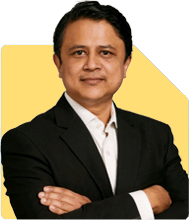Sir I am 55 now , only one son who is earning 24 lakhs per annum yet to be married, I am a business man , no EMI and real estate assets worth 8 crores, Bank FD 75 lakhs, gold 1.5 crores, mutual funds 15 lakhs, I have a rental income of 1.5 lakhs per month. My business is debt free and running in normal phase, business income post tax is around 3 lakhs per month. My wife is telling me to take retirement she is telling you've worked from the age of 18 why are you still running? Our only son will not takeover your business, so try to enjoy remaining years peacefully. What should I do?
Ans: Assessing Your Current Situation
Your current financial situation is strong. You have substantial assets, including real estate worth Rs. 8 crores, fixed deposits of Rs. 75 lakhs, gold valued at Rs. 1.5 crores, and mutual funds worth Rs. 15 lakhs. Your business generates a post-tax income of Rs. 3 lakhs per month, and you have rental income of Rs. 1.5 lakhs per month.
You also have the support of a successful son who earns Rs. 24 lakhs per annum. You are debt-free, and your business is running smoothly.
This strong financial foundation provides you with the security and flexibility to consider retirement.
Evaluating the Retirement Decision
Emotional and Psychological Factors
Retirement is not just a financial decision. It involves emotional and psychological considerations.
You have worked since the age of 18, and your wife is encouraging you to enjoy your remaining years peacefully.
It’s essential to think about how retirement will affect your daily routine and sense of purpose.
Consider what activities, hobbies, or interests you could pursue in retirement to stay engaged and fulfilled.
Financial Independence and Security
Your financial situation suggests that you have achieved financial independence.
Your assets and income streams provide a secure foundation for retirement.
With a debt-free business and no EMIs, you have minimal financial obligations.
Your rental income and business income are substantial and can support your lifestyle even without active business involvement.
Legacy and Succession Planning
It’s important to consider the future of your business.
Your son is not interested in taking over the business. Therefore, succession planning is crucial.
You might consider selling the business or hiring a professional manager to run it.
This approach allows you to step back without completely shutting down the business, ensuring it continues to generate income.
Planning for a Smooth Transition
Gradual Retirement Approach
Instead of abrupt retirement, you might consider a gradual transition.
Start by reducing your involvement in day-to-day operations.
Delegate responsibilities to trusted employees or a manager.
This approach allows you to stay connected to your business while gradually stepping back.
Building a Retirement Lifestyle
Retirement is an opportunity to pursue new interests and hobbies.
Plan activities that you enjoy, whether it’s traveling, learning something new, or spending more time with family.
Engaging in these activities can help make the transition to retirement smoother and more fulfilling.
Managing Your Financial Assets
You have significant assets that need to be managed wisely.
Ensure your fixed deposits are earning competitive interest rates and consider diversifying your investments for better returns.
Your gold holdings are valuable, but they don’t generate income. You might explore ways to convert a portion into income-generating assets.
Your mutual funds could be reviewed to ensure they align with your retirement goals.
Ensuring Family Financial Security
Protecting Your Family’s Future
You have a responsibility to ensure your family’s financial security.
Consider creating a detailed financial plan that covers future expenses, including healthcare, living expenses, and any financial support your son might need.
Review your insurance policies to ensure adequate coverage for unforeseen circumstances.
If you don’t have a will, it’s essential to create one to ensure your assets are distributed according to your wishes.
Education and Marriage of Your Son
Your son’s education and marriage are significant milestones.
Although he is earning well, it’s wise to set aside funds for his future education or marriage.
This ensures that these expenses are covered without impacting your retirement corpus.
Preparing for Unforeseen Circumstances
Emergency Fund
Even in retirement, it’s essential to have an emergency fund.
Set aside at least 6-12 months’ worth of expenses in a liquid, easily accessible account.
This fund will provide financial stability in case of any unforeseen events.
Healthcare Planning
Healthcare is a crucial aspect of retirement planning.
Ensure you have adequate health insurance coverage for you and your wife.
Consider setting up a dedicated healthcare fund to cover any out-of-pocket expenses.
Making the Final Decision
Aligning with Your Values and Goals
Ultimately, your decision to retire should align with your values and goals.
Reflect on what you want to achieve in your remaining years.
Consider how your decision will impact your family, your lifestyle, and your sense of fulfillment.
Discuss with Your Family
Involve your wife and son in this decision.
Their support and understanding are crucial to a smooth transition.
Having open conversations will ensure everyone is on the same page and that your decision is well-informed.
Final Insights
You have built a strong financial foundation, and now you stand at a crossroads. Your wife’s advice to retire is understandable, given your long years of hard work. You are financially secure, and your assets provide a safety net for you and your family.
Retirement doesn’t have to mean the end of your involvement in your business or financial life. You can consider a phased retirement, where you gradually reduce your work commitments while exploring new interests and hobbies.
It’s also essential to ensure that your financial assets are managed wisely to continue supporting your lifestyle in retirement. Succession planning for your business, protecting your family’s future, and preparing for unforeseen circumstances are all critical aspects to consider.
Retirement is a personal decision that goes beyond finances. It’s about aligning with your values, goals, and what brings you joy. Take the time to reflect, discuss with your family, and plan for a fulfilling and secure retirement.
Best Regards,
K. Ramalingam, MBA, CFP,
Chief Financial Planner,
www.holisticinvestment.in




























